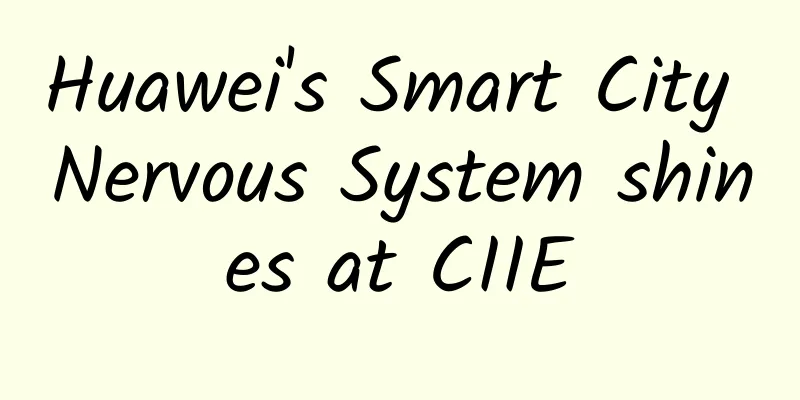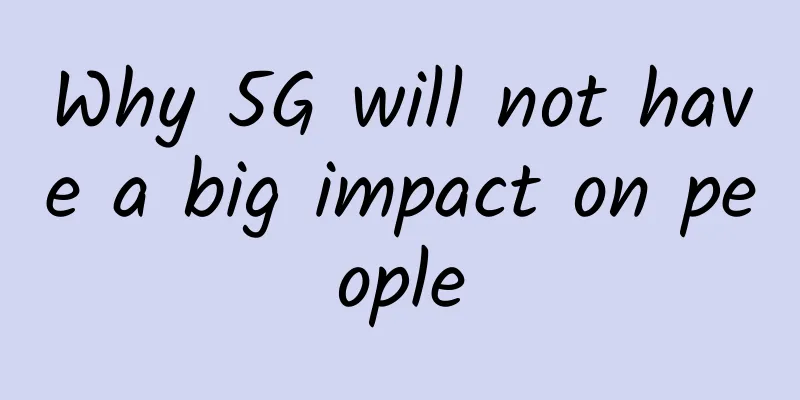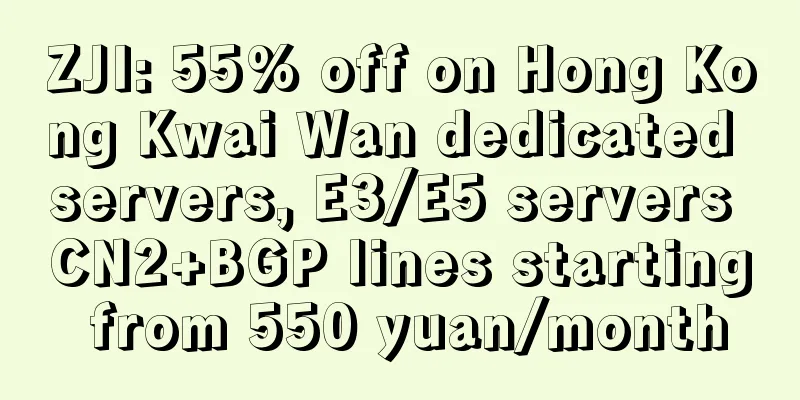Huawei's Smart City Nervous System shines at CIIE

|
From August 21st to 23rd, the 2018 (4th) China Smart City International Expo (hereinafter referred to as "Smart Expo") was grandly held at the Shenzhen Convention and Exhibition Center. With the theme of "New ICT, Building the Nervous System of Smart Cities", Huawei and its smart city partners appeared at this Smart Expo, jointly displaying innovative and leading smart city solutions and sharing rich practical experience; Huawei also participated in the "2018 China Smart City (International) Innovation Forum", "Mayor Forum-Shenzhen Smart City International Roundtable Seminar", "Academician Lecture Hall: New Smart City Top-level Design" sub-forum, "Future City, Gathering Data and Wisdom-New Smart City and Characteristic Town Industry Ecology Seminar", "The Second China-Korea Smart City Seminar" and other special events, actively interacting with customers and relevant partners in various cities to explore the development of smart cities; in addition, the organizers also invited exhibitors from all over the country and overseas to visit the Longgang Smart Center jointly built by Huawei and Shenzhen. Creating smart city fertile soil to enable urban digital transformation At the 2018 China Smart City (International) Innovation Forum, Yang Ping, Vice President of Huawei EBG China, said in her keynote speech: Entering the era of industry digitalization, ICT technologies represented by the Internet of Things, cloud computing, big data, artificial intelligence, and 5G are no longer just reflected in efficiency improvements. ICT has become an enabler of industry digital transformation. At the Mayor Forum - Shenzhen Smart City International Roundtable Seminar, Yang Ping shared Huawei's understanding of smart cities, Huawei's positioning in smart cities, and the practical experience Huawei has accumulated in helping cities with digital transformation.
Yang Ping, Vice President of Huawei EBG China First, Yang Ping used the cases of Qingdao Sea Rice Development, Shenzhen Smart Transportation, and Yiyang Smart Agriculture to illustrate that ICT has become an enabler of urban digital transformation. Huawei cooperated with the Qingdao Sea Rice R&D Center to provide advanced ICT technology for the Sea Rice project. By deploying many sensors underground and on the surface of the rice fields to sense soil temperature, light, salinity, and the growth of crops, and then using technologies such as artificial intelligence and expert diagnosis systems, accurate fertilization and medication, soil quality monitoring, pest control, and automatic yield measurement can be achieved. The project saves 30% of water and 40% of fertilizer, while increasing economic benefits by 20%. China has 1.5 billion mu of saline-alkali land. If we can transform 100 million mu of arable land into arable land through these technical means, the grain produced will be equivalent to the total grain output of Hunan Province in one year, and can feed an additional 80 million people. Second, in the construction of smart cities, Huawei's positioning is to provide software and hardware platforms for ICT infrastructure. At the same time, this platform is based on the collaboration of "cloud, pipe, and terminal". Third, Huawei's strategy is "platform + ecosystem". Huawei focuses on ICT infrastructure and works with ecosystem partners to provide customers with new smart city overall solutions. Huawei's smart city ecosystem currently has 30 partners, including investment and financing, integrated operations, top-level design, and upper-level business application development. Fourth, Huawei summarizes the four elements for the success of smart cities: a top-level project; solid investment from the government, including funding and strategic patience; a strong execution team; and a digital partner with a leading role. Build a platform and move forward hand in hand At the "Academician Lecture: Top-level Design of New Smart Cities - The Past, Present and Future of Smart Cities" event, Zheng Zhibin, President of Huawei EBG Global Smart City Business Unit, delivered a keynote speech entitled "Building a Platform, Moving Forward Hand in Hand". He believes that technology cannot solve all problems. The power of science and technology and informatization is a powerful enabling and driving force. The real solution is to be motivated from within. Digital transformation is driven by two wheels, including business and technology. Specifically, it is a V-shaped model with two main lines. One is CBA (Customer-Business-Architecture), which returns to the essence of business and creates value for citizens and economic development. Based on this, the direction of architecture-driven technology is determined. The other line is ABC (AI+Big Data+Cloud), which uses a standardized technical architecture to support business development. For example, when artificial intelligence technology is applied to different scenarios, it will produce completely different values. We need to apply technology to scenarios where value is maximized.
Zheng Zhibin, President of Huawei EBG Global Smart City Business Unit At the same time, Zheng Zhibin emphasized that the "platform + ecology" strategy is necessary. Cities need to build a healthy and sustainable ecology. If we compare the ecology of a city to the ecology of a smartphone, the city's ICT infrastructure is the hardware of the phone (powerful performance, sufficient computing resources, rich storage resources, high-speed network connection, etc.), and the city's digital platform is the operating system of the phone (open and standardized). The city's application system should be a hundred flowers blooming, giving full play to the power of the whole society, and adopting a natural selection mechanism that conforms to market laws, so as to release the innovation of the whole society. Build a smart city ecosystem and grow together with partners At the "Future City, Gathering Data to Create Intelligence - New Smart City and Characteristic Town Industry Ecosystem Seminar", Wang Wei, Vice President of Huawei EBG China Smart City Business Department, said: In recent years, China's smart city construction has entered a solid period of prosperity. Whether it is first-tier cities such as "Beijing, Shanghai, Guangzhou and Shenzhen", or prefecture-level cities (counties) such as Yiyang, Hunan and Gaoqing, Shandong, more and more city managers are really willing to invest resources and funds in smart city construction. Huawei is driven by "technological innovation and customer needs" to build the "black soil" of smart cities, enable partners through platform open capabilities, and grow together with partners while helping customers succeed.
Wang Wei, Vice President of Huawei EBG China Smart City Business Department Build smart cities and develop digital economy At the second China-Korea Smart City Seminar, Yao Jiankui, Chief Engineer of Smart City, Huawei EBG China, delivered a speech entitled "Building Smart Cities and Developing Digital Economy". Yao Jiankui said that the digital economy competition characterized by smart cities is being staged simultaneously around the world, driving the sustainable development of cities. The digital economy is successfully driving the transformation of cities through "cultivating" industries, "converting" kinetic energy, and "endogenous" wisdom. For example, in Tianjin Binhai, Huawei and TEDA jointly designed and built the first "AI+Smart City" in China, using AI technology and the "Happiness TEDA Index System" as the dual "engines". According to the overall framework of "1+4+N", it is planned to use the next three years to build a city brain IOC center and four AI convergence platforms for listening to people's voices, feeling cities, caring for people, and serving enterprises, as well as a number of AI innovation demonstration applications. Relying on its leading advantages in the field of information and communications, Huawei actively practices the construction of global smart cities and builds smart cities for more than 40 countries and more than 120 cities around the world. In the field of smart cities, Huawei "does more than it says" and actively builds a smart city ecosystem to jointly provide customers with overall smart city solutions.
Yao Jiankui, Chief Engineer of Smart City, Huawei EBG China Build a smart city nervous system and become a smart city practitioner Longgang Smart Center is a smart city operation center jointly built by Huawei and Shenzhen. The construction area is 17,748 square meters. The project includes "one center, three platforms, and N applications": one center is the smart center, and the three platforms include the basic information platform, collaborative office platform and public service platform. Various city-related applications run efficiently in the system.
Longgang New Smart City Operation and Management Center With the support of many companies represented by Huawei, Longgang District plans to build a large platform, big data, and large systems in 3-5 years to promote the comprehensive integration of technology, business and data, realize cross-level, cross-regional, cross-system, cross-departmental, and cross-business collaborative management and services, and take the lead in building a domestic leading new smart city benchmark area. |
<<: How SD-WAN is reconfiguring enterprise services
>>: Huawei's Liang Hua: Give machines intelligence and services a platform
Recommend
After the mixed-ownership reform, can China Unicom seize the opportunity to make a comeback in 5G?
Image source: Visual China Among China's thre...
Design of high-density WiFi terminal occupied air interface resources calculation method
In places where high-density WI-FI terminals are ...
Why do 5G mobile phones support more frequency bands?
How many 5G frequency bands a mobile phone can su...
EtherNetservers: Los Angeles VPS starts at $12 per year, 1GB/30GB/2TB/2IP, supports Alipay/PayPal
EtherNetservers' cheap annual VPS is currentl...
China Academy of Information and Communications Technology: Cumulative domestic shipments of 5G mobile phones reached 163 million units from January to December
Today, the China Academy of Information and Commu...
The 2020 Third Dual-State IT Beijing User Conference concluded successfully!
On January 11, 2020, the 2020 Third Dual-State IT...
AlexHost: Moldova unlimited VPS from 11.88 EUR/year
I received a message from AlexHost, a foreign hos...
RAKsmart San Jose high-defense servers start from $79/month, Japan/Korea servers start from $79/month
Yesterday we shared the RAKsmart New Year's b...
The report card of the three major operators in 2020: 5G users exceeded 250 million, China Mobile dominated and China Unicom was in a severe situation
The three major operators have recently announced...
A brief discussion on Bluetooth mesh technology and its application in smart home field
Part 01 Bluetooth mesh technology features - Supp...
What else to look forward to in the communications industry in 2021?
[[373658]] This article is reprinted from the WeC...
What 5G means for the real-time data market
5G, the next generation of cellular network techn...
"Intelligent Ecosystem to Open the Future with Data" ——2021 China Digital Ecosystem Heroes Conference was grandly held
On May 8, the "2021 China Digital Ecosystem ...
Veteran Network Engineer: A brief discussion on the thinking and practice of SDN design under cloud-network collaboration
The Internet has been quietly changing over the y...
Fiber Optic Test Equipment Market to Reach $1.78 Billion by 2033
A new report from Future Market Insights (FMI) de...









